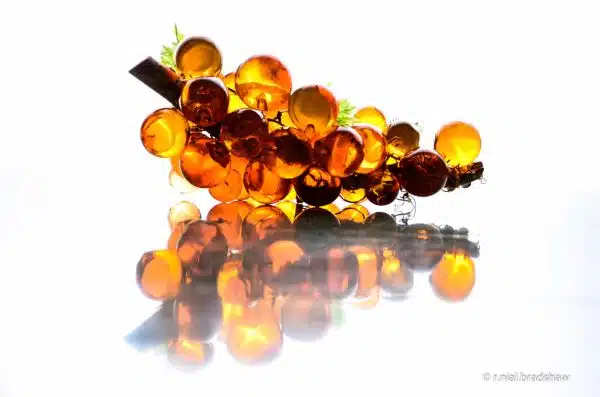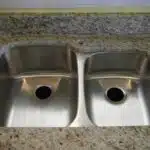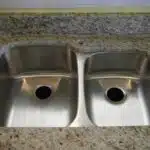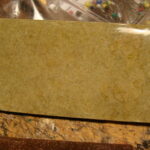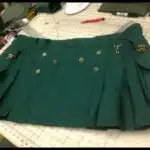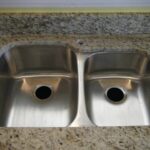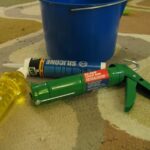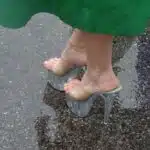Acrylic and lucite are two of the most popular materials used in furniture, home decor, and other household items. These materials are known for their crystal-clear appearance, durability, and lightweight structure. However, just like any other material, acrylic and lucite require proper cleaning and maintenance to preserve their beauty and functionality.
As an acrylic and lucite cleaning expert, I know that many people struggle with finding the right technique to clean these materials without causing damage or leaving streaks. In this article, I will share my knowledge on how to clean acrylic and lucite effectively using simple household items. By following these tips, you can keep your acrylic and lucite items looking as good as new while extending their lifespan.
Understanding Acrylic And Lucite
Acrylic and Lucite are two popular materials used in various industries, from furniture to automotive parts. Acrylic is a type of plastic derived from acrylic acid, while Lucite is a brand name for a type of acrylic. Although they have similar characteristics, there are some differences between the two.
Acrylic is known for its clarity and transparency, making it ideal for use in windows, skylights, and aquariums. It’s also lighter than glass and has better impact resistance. On the other hand, Lucite is more scratch-resistant than regular acrylic and has a higher level of heat resistance. This makes it suitable for products that require exposure to high temperatures such as lighting fixtures.
When it comes to choosing between the two materials, there are some pros and cons to consider. Acrylic is cheaper than Lucite but can be prone to yellowing over time when exposed to UV light. In contrast, Lucite is more expensive but retains its clarity better and has better scratch resistance. Ultimately, the decision will depend on the specific needs of your project.
Understanding the characteristics and differences between acrylic and Lucite is important when it comes to proper maintenance and cleaning. Both materials require special care to prevent damage or discoloration during cleaning. In the next section, we’ll discuss why proper cleaning is essential for maintaining their appearance and longevity.
Why Proper Cleaning Is Important
Acrylic and Lucite surfaces should be properly cleaned to maintain the quality of the material, as well as to prevent any damage occurring. To clean acrylic and lucite surfaces, it is recommended to use a soft cloth, warm water, and a mild soap or detergent. It is important to avoid any abrasive cleaners, as it may damage the surface. Finally, a soft dry cloth should be used to dry any excess moisture from the surface.
Maintaining Quality
As an acrylic and lucite cleaning expert, it is important to emphasize the significance of maintaining quality in these materials. Proper cleaning and maintenance can help extend the lifespan of your acrylic and lucite items, ensuring they remain clear and brilliant for years to come. To maintain quality, it is crucial to adopt proper storage practices that prevent scratches, cracks, and damage due to exposure to sunlight.
One of the most common issues with acrylic and lucite items is yellowing. This can occur due to a variety of reasons such as exposure to heat or chemicals. To prevent yellowing, it is essential to use the right cleaning products that are specifically designed for these materials. Avoid using abrasive cleaners or rough cloths that can scratch or damage the surface of your items.
In addition, proper storage should be practiced to avoid exposing your acrylic and lucite items to direct sunlight or extreme temperatures. Store them in a cool, dry place away from windows or heat sources. If you must display them in direct sunlight, consider using UV-resistant coatings or films that will protect your items from discoloration or damage caused by UV rays. By following these guidelines, you can ensure that your acrylic and lucite items remain stunning for years without any yellowing or discoloration issues.
Preventing Damage
As an expert in acrylic and lucite cleaning, it is essential to recognize the significance of preventing damage to these materials. Proper handling techniques are necessary to prevent scratches, cracks, or any other forms of damage that can affect the clarity and longevity of your items. Even the smallest scratch can make acrylic and lucite prone to yellowing or discoloration over time.
To prevent damage, it is crucial to handle these materials with care at all times. Avoid placing them on rough surfaces or exposing them to sharp edges that can scratch or crack their surface. When moving them around, be sure to use soft cloths or microfiber towels that won’t leave any scratches behind. It’s also important to store them properly when not in use – keep them away from direct sunlight and extreme temperatures.
Proper handling techniques go hand-in-hand with preventing yellowing in acrylic and lucite items. By avoiding damage, you’re also reducing the risk of exposure to heat or chemicals that can cause yellowing over time. Ultimately, taking good care of your acrylic and lucite items will ensure their clarity and brilliance for years to come. With the right knowledge and understanding of proper cleaning and storage practices, you can maintain quality in your acrylic and lucite items while serving others who admire their beauty.
Preparing For Cleaning
Proper cleaning of acrylic and lucite is essential to maintain their clarity and shine. These materials are sensitive to scratches, abrasions, and chemical reactions, which can cause cloudiness, discoloration, or even cracking. Therefore, it is crucial to follow the correct cleaning procedures and use appropriate cleaning supplies.
Before starting the cleaning process, make sure that you have proper ventilation in the area where you will be working. Acrylic and lucite cleaners contain solvents that can produce fumes or odors that may cause irritation or health problems if inhaled. Therefore, it is advisable to open windows, doors or turn on the exhaust fan to improve air circulation. Additionally, wear gloves and protective eyewear when handling cleaning products.
When choosing cleaning supplies for acrylic and lucite surfaces, avoid using harsh chemicals such as ammonia-based or abrasive cleaners as they can damage the material’s surface. Instead, use mild soap or detergent mixed with warm water to clean dirt buildup and grime. For tough stains such as ink marks or scuff marks from shoes or furniture legs, use a specialized cleaner designed for acrylics and lucites. Apply the cleaner with a soft cloth using gentle circular motions until the stain disappears.
Choosing The Right Cleaning Products
Did you know that using the wrong cleaning product can cause damage to your acrylic and lucite surfaces? It’s true! That’s why it’s crucial to choose the appropriate cleaning products for these materials. When selecting a cleaning solution, look for those that are specifically designed for use on acrylic and lucite surfaces. These solutions are formulated with ingredients that won’t damage or scratch your material.
Harmful ingredients to avoid include ammonia, bleach, vinegar, and other abrasive chemicals. These substances are known to cause discoloration, cracking, and scratches on your acrylic or lucite surfaces. Instead of using harsh chemicals, opt for mild dish soap and warm water when cleaning these materials. Alternatively, you can purchase a specialized cleaner that is gentle yet effective in removing dirt and grime.
By choosing the right cleaning products for your acrylic and lucite surfaces, you can ensure their longevity and keep them looking like new. Remember to read the label carefully before purchasing any cleaning solution and always avoid harmful ingredients. In the next section, we’ll discuss how to avoid abrasive materials when cleaning your acrylic and lucite surfaces.
Avoiding Abrasive Materials
Having the right cleaning products is important when it comes to acrylic and lucite cleaning. However, ensuring that you use gentle cleaners is equally crucial. When selecting a cleaner, avoid those that contain ammonia or alcohol as they can cause damage to these materials over time. Instead, select a mild soap solution and mix it with warm water to clean your acrylic and lucite items.
When it comes to cleaning acrylic and lucite items, polishing techniques are another essential aspect to consider. Once you have cleaned the item using a mild soap solution, dry it off with a soft cloth. Then, you can use a specialized polish for acrylic or lucite surfaces to give them an extra shine if needed. Remember not to use any abrasive materials while polishing as this can cause scratches on the surface.
Incorporating both gentle cleaners and proper polishing techniques will help ensure that your acrylic and lucite items stay in good condition for years to come. Next up, we’ll provide some tips for cleaning large acrylic and lucite items such as furniture pieces or displays without causing any damage.
Tips For Cleaning Large Acrylic And Lucite Items
To effectively clean large acrylic and lucite items, it is important to have the right tools and techniques. These materials can be easily scratched or damaged if not handled properly.
Begin by removing any loose dirt or debris with a soft cloth or microfiber towel. Next, create a solution of warm water and mild dish soap. Use a new, clean cloth to apply the solution to the item in a circular motion, making sure to cover all areas thoroughly.
Dealing with stubborn stains can be more challenging. For these tough spots, try using a small amount of rubbing alcohol on a cotton ball, gently rubbing the area until the stain is removed. Avoid using harsh chemicals or abrasive cleaning tools as they can cause damage to the surface of the material. Remember to always dry your acrylic or lucite item thoroughly after cleaning to prevent water spots and streaks.
- Use distilled water for best results
- Apply a coat of wax after cleaning for added protection
- Store large items in protective covers when not in use
- Regularly dust large acrylic and lucite items to prevent buildup
In order to keep your large acrylic and lucite items looking their best, it is important to follow these tips and take care when cleaning them. With proper maintenance, these pieces can last for years without losing their beautiful shine. Next up: tips for cleaning small acrylic and lucite items.
Tips For Cleaning Small Acrylic And Lucite Items
- Scratches on acrylic and lucite items can be removed by thoroughly buffing with a polishing compound and a soft cloth.
- The surface of acrylic and lucite items can be polished with a commercial grade acrylic polish or wax.
- Fingerprints on acrylic and lucite items can be removed by using a damp cloth and a mild detergent or soap.
- For tougher fingerprints on acrylic and lucite items, a soft cloth dampened with isopropyl alcohol can be used to remove the residue.
- Acrylic and Lucite items should be buffed with a soft, clean cloth after cleaning to restore the shine and eliminate any residue.
- For best results, acrylic and Lucite items should be cleaned and polished regularly to maintain their clear appearance.
Removing Scratches
Removing scratches from small acrylic and lucite items can be a daunting task for many. Despite their durability, these materials are prone to scratches and blemishes over time. However, with the right polishing techniques, it is possible to remove surface-level scratches and restore the item’s original shine.
Before attempting any polishing or repairing of scratches, it is important to clean the item thoroughly to ensure that there is no dirt or debris on the surface. Once cleaned, examine the scratch closely to determine its depth. If it is a minor scratch, it can often be removed using an acrylic polishing compound or toothpaste. For deeper scratches, sanding may be necessary before applying the polishing compound.
When repairing scratches on small acrylic and lucite items, it is important to use a gentle touch and avoid using harsh chemicals or abrasive materials that could further damage the surface. Always start with the least abrasive method first and work your way up if needed. With patience and care, even deep scratches can often be repaired without having to replace the entire item. By following these tips for removing scratches from small acrylic and lucite items, you can keep your cherished possessions looking like new for years to come.
Polishing Surfaces
Polishing surfaces is an essential step in maintaining the clarity and shine of small acrylic and lucite items. Over time, these materials can become dull and scratched due to daily wear and tear. Polishing techniques can help remove surface-level scratches and restore the item’s original luster.
To polish small acrylic and lucite items, start by cleaning the surface thoroughly to remove any dirt or debris. Once cleaned, apply a small amount of acrylic polishing compound or toothpaste onto a soft cloth and gently rub it onto the scratched area in a circular motion. Continue rubbing until the scratch is no longer visible. For deeper scratches, sanding may be necessary before polishing.
Maintaining clarity on small acrylic and lucite items requires regular polishing to prevent scratches from becoming more visible over time. Using gentle polishing techniques can help keep these cherished possessions looking like new for years to come. With patience and care, even heavily scratched items can often be restored to their original beauty without having to replace the entire piece.
Cleaning Fingerprints
As an expert in cleaning acrylic and lucite items, it is important to address the issue of fingerprints. When handling small acrylic and lucite items, such as jewelry or picture frames, it is common for smudges and fingerprints to appear on the surface. These can be unsightly and detract from the overall appearance of the item. Fortunately, there are simple techniques that can be used to remove fingerprints and prevent future ones from appearing.
To remove smudges and fingerprints from small acrylic and lucite items, start by using a soft cloth or microfiber towel. Dampen the cloth with warm water and gently wipe down the surface of the item to remove any dirt or debris. Then, apply a small amount of rubbing alcohol or glass cleaner onto the cloth and use it to clean the surface of the item in a circular motion. Be sure to avoid using harsh chemicals or abrasive materials that could scratch or damage the surface.
Preventing future fingerprints on small acrylic and lucite items requires some proactive measures. First, try to handle these items as little as possible to minimize contact with oils from your skin. When handling them, use gloves made of cotton or other non-abrasive materials to prevent smudges. Additionally, consider applying an anti-static spray or coating onto the surface of the item to repel dust and other particles that could attract fingerprints. By following these simple tips for removing smudges and preventing future fingerprints, you can keep your small acrylic and lucite items looking their best for years to come.
Cleaning Acrylic And Lucite Furniture
To effectively clean acrylic and lucite furniture, there are several cleaning techniques and maintenance tips to keep in mind. First, avoid using any harsh chemicals or abrasive cleaners as they can cause damage to the surface of the material. Instead, use a soft cloth or sponge and mild soap with warm water to gently clean the surface.
Another important tip is to regularly dust the furniture with a soft, dry cloth to prevent any buildup of dirt or debris. For tougher stains or marks, you can use a specialized acrylic and lucite cleaner that is specifically designed for these materials. Be sure to follow the manufacturer’s instructions carefully when using these products.
To maintain the beauty and clarity of your acrylic and lucite furniture over time, it’s important to protect them from direct sunlight or extreme temperatures. This can cause discoloration and warping of the material. Additionally, avoid placing hot objects directly on the surface as this can cause damage as well.
Transitioning into cleaning acrylic and lucite home decor, it’s important to note that many of the same cleaning techniques and tips apply. Whether you’re dealing with small items like picture frames or larger pieces such as lamps or vases, gentle cleaning with mild soap and warm water is key. Regular dusting will also help prevent any buildup of dirt or grime on these items. By incorporating these simple maintenance tips into your cleaning routine, you can keep your acrylic and lucite home decor looking beautiful for years to come.
Cleaning Acrylic And Lucite Home Decor
Acrylic and lucite are both popular materials used in home decor items, such as furniture, picture frames, and decorative accessories. However, over time these items can become dirty and dull from everyday use. As an expert in acrylic and lucite cleaning, I am here to share some valuable tips on how to preserve your home decor while keeping it clean.
Firstly, it is important to use the right cleaning products for acrylic and lucite. Avoid using harsh chemicals or abrasive cleaners that can scratch or damage the surface. Instead, opt for a gentle cleaner like dish soap mixed with warm water or a specialized acrylic cleaner. Always test a small area first before applying the cleaner to the entire surface.
Secondly, when cleaning your acrylic or lucite home decor items, be sure to use a soft microfiber cloth to avoid scratching the surface. Gently wipe down the item in a circular motion until all dirt and grime have been lifted away. For stubborn stains, you can use rubbing alcohol on a cotton ball or sponge.
Lastly, to keep your items looking their best for years to come, consider using some cleaning hacks like applying car wax or furniture polish after cleaning. This will help protect the surface from scratches and provide a protective barrier against dust and fingerprints.
Incorporating these simple home decor preservation tips into your routine will ensure that your acrylic and lucite items stay clean and shiny. But what about cleaning acrylic and lucite jewelry? Let me show you how in the next section.
Cleaning Acrylic And Lucite Jewelry
After cleaning your acrylic and lucite home decor, it’s time to move on to your jewelry. These pieces can be delicate and require special care to maintain their shine and clarity. The good news is that the same gentle detergents used for home decor are also suitable for jewelry.
When cleaning acrylic and lucite jewelry, avoid using abrasive materials or harsh chemicals. Instead, use a soft cloth or sponge with warm water and a mild detergent. Be sure to rinse thoroughly with clean water and dry with a soft cloth.
To keep your acrylic and lucite jewelry looking brand new, consider using polishing compounds. These products gently remove scratches and restore the shine of your jewelry. Be sure to follow the manufacturer’s instructions carefully when using these products.
As you continue to care for your acrylic and lucite pieces, remember that maintaining their shine and clarity is just as important as cleaning them. Regularly dusting them with a soft cloth can help prevent scratches and buildup of dirt or grime. With proper care, your acrylic and lucite jewelry will remain beautiful for years to come.
Maintaining The Shine And Clarity
Once you have cleaned your acrylic or lucite surface, it is important to maintain its shine and clarity. One way to do this is through proper polishing techniques. Using a microfiber cloth and a specialized acrylic polish, gently buff the surface in circular motions until it shines. Avoid using regular household cleaners or rough materials such as paper towels or scrub brushes, as these can cause scratches and damage to the surface.
If your acrylic or lucite has already incurred scratches, there are ways to remove them. For small scratches, try using a toothpaste with baking soda and rubbing it onto the scratch in a circular motion with a soft cloth. Rinse with water and dry with a clean cloth. For deeper scratches, use a specialized acrylic scratch remover that can be found at most hardware stores. Follow the instructions carefully and always test on an inconspicuous area first before applying to the entire surface.
Proper maintenance of your acrylic or lucite surfaces will ensure their longevity and keep them looking their best. In addition to polishing techniques and removing scratches, it is important to prevent further damage by avoiding placing heavy objects on the surface or using harsh chemicals for cleaning. By taking these steps, you can enjoy your beautiful acrylic or lucite surfaces for years to come.
Preventing Scratches And Damage
Like a delicate flower, acrylic and lucite require proper care to maintain their beauty and functionality. Preventing scratches and damage is crucial to the longevity of these materials. A simple way to think about it is to treat them like you would a new car. You wouldn’t take a key to your shiny new ride, so why risk damaging your acrylic and lucite items?
Preventing smudging is an important step in keeping these materials looking great. Fingerprints and oils can cause unsightly marks that detract from their beauty. To avoid this, handle them with clean hands or gloves. Additionally, use a soft microfiber cloth when cleaning instead of abrasive materials like paper towels or sponges.
Dealing with stubborn stains requires a bit more effort but can be accomplished with some household items. For example, rubbing alcohol can remove ink stains while baking soda mixed with water can tackle tougher stains like coffee or juice. Always spot test in an inconspicuous area before attempting to remove the stain entirely.
As we’ve discussed, preventing scratches and damage is essential when it comes to caring for acrylic and lucite items. In the next section, we’ll discuss how storing these items properly can also help extend their lifespan and protect them from harm.
Storing Acrylic And Lucite Items
Storing acrylic and lucite items safely is essential to preserving their luster and preventing damage. Proper cleaning with the right products before storage is necessary to protect the material from lingering dust and dirt particles. A mild detergent, warm water, and a soft cloth are the preferred products and tools to use when cleaning acrylic and lucite items. Additionally, extra care should be taken to avoid using excessive force when cleaning and scrubbing acrylic and lucite surfaces to prevent scratching and marring.
Storing Acrylic
As an acrylic and lucite cleaning expert, I understand the importance of choosing proper storage for these items. Improper storage can lead to scratches, cracks, and even yellowing. It is essential to keep them away from direct sunlight, as UV rays can cause discoloration over time. Choosing a cool, dry place with consistent temperature and humidity levels is ideal.
To prevent yellowing, you must store acrylic and lucite items away from heat sources and chemicals that can damage them. Avoid placing them near heating vents or radiators as they can cause warping or melting. Also, keep them away from harsh chemicals such as ammonia-based cleaners, which can cause irreversible damage.
In conclusion, storing acrylic and lucite items properly is crucial for their longevity. Follow these guidelines to ensure that your precious possessions remain in pristine condition for years to come. Remember to choose the right storage location and prevent yellowing by keeping them away from heat sources and harmful chemicals. Your investment will be worth it in the long run!
Lucite Items Safely
As an expert in cleaning acrylic and lucite items, it is crucial to discuss the importance of handling and storing lucite items safely. Lucite is a type of acrylic that is known for its clarity, durability, and resistance to shattering. However, it can still scratch or crack if not treated with care. One way to protect lucite items is by applying protective coatings that can prevent scratches and yellowing over time.
Restoration techniques are also vital when dealing with damaged lucite items. If your precious possession has already sustained damage such as scratches or cracks, there are restoration techniques available to restore them to their original condition. However, it’s essential to choose the right technique depending on the extent of the damage. For minor scratches, you can use a polishing compound specifically designed for acrylics and lucites.
To store lucite items safely, it’s advisable to wrap them in soft cloth or bubble wrap before putting them in a storage container. This will help avoid scratches during storage or transportation. Additionally, store them away from direct sunlight and heat sources that can cause yellowing or warping. Proper storage and handling can prolong the lifespan of your lucite items and ensure that they remain as beautiful as when you first acquired them.
Overall, protecting your lucite items through proper storage and handling is essential for maintaining their beauty and longevity. Applying protective coatings, utilizing restoration techniques when needed, wrapping them in soft cloth during storage or transportations are just some ways that you can keep your prized possessions safe from damage. By following these guidelines, you’ll be able to enjoy your lucite items for years to come!
Troubleshooting Common Cleaning Problems
After storing your acrylic and lucite items, it’s time to give them a good cleaning. These materials are known for their durability and clarity, but they can also scratch easily and attract stubborn stains. Here’s how to clean them effectively:
Use a microfiber cloth: Before using any cleaning product, make sure to remove any dust or debris from the surface with a soft microfiber cloth. This will prevent scratches from occurring during the cleaning process.
Choose a gentle cleaner: Avoid using harsh chemicals or abrasive cleaners that can damage the surface of your acrylic or lucite item. Instead, opt for a mild soap solution or specialty acrylic cleaner.
Apply the cleaner correctly: Dip the microfiber cloth into the cleaning solution and gently wipe the surface in circular motions. Avoid applying too much pressure or scrubbing aggressively, as this can cause scratches.
Removing stubborn stains and dealing with scratches: If you encounter tough stains like ink or paint, try using rubbing alcohol or nail polish remover on a cotton ball to gently dab at the stain until it lifts away. For deeper scratches, use a polishing kit specifically designed for acrylic and lucite surfaces.
By following these tips, you can keep your acrylic and lucite items looking clear and pristine for years to come. It’s important to take care when cleaning these materials, but with the right approach, you can enjoy their beauty without worrying about damaging them in the process.
Final Thoughts And Recommendations
As an expert in acrylic and lucite cleaning, I recommend incorporating the following tips for long term maintenance of your pieces. Firstly, be careful with what products you use to clean your acrylic and lucite items. Avoid using harsh chemicals or abrasive materials as they can cause damage and scratches. Instead, opt for a microfiber cloth or soft sponge with mild soap and water.
When it comes to deep cleaning, there are best practices that will ensure your acrylic and lucite items remain in top condition. For tough stains or marks, use a non-abrasive cleaner specifically designed for acrylic surfaces. Be sure to rinse thoroughly with water afterward and dry with a soft cloth to prevent water spots.
In conclusion, maintaining the pristine appearance of acrylic and lucite items requires careful attention to detail. By following these tips for long term maintenance and best practices for deep cleaning, you can ensure that your pieces remain looking new for years to come. Remember to always handle these delicate materials with care and avoid exposing them to harsh chemicals or abrasive materials.
Conclusion
Acrylic and Lucite are beautiful materials that require proper cleaning to maintain their luster and clarity. It is essential to use the right cleaning products and techniques to avoid scratches, discoloration, or damage. Before cleaning, it is crucial to prepare the surface by removing any dust or debris using a soft cloth or brush.
When choosing cleaning products, ensure they are specifically designed for acrylic and Lucite surfaces. Avoid using abrasive cleaners, rough sponges, or brushes that can scratch the surface. Instead, use mild soap and warm water or specialized cleaners that leave no residue.
Storing your acrylic and Lucite items correctly is also vital in maintaining their quality. Store them away from direct sunlight or heat sources to prevent warping or discoloration. Additionally, place protective coverings on items that may be exposed to scratches or damage during storage.
One objection some may have is the cost of specialized cleaners for acrylic and Lucite surfaces. However, investing in high-quality cleaners will ultimately save money in replacement costs due to scratches or damage caused by improper cleaning methods.
As an expert in acrylic and Lucite cleaning, I recommend taking the necessary steps to clean and care for these materials properly. Doing so will ensure their longevity and beauty for years to come. Remember always to choose the right products, avoid abrasive materials, store them correctly, troubleshoot any issues that arise during cleaning and maintenance processes.
Image Credits
- “lucite-grapes.jpg” by r.nial.bradshaw (featured)

